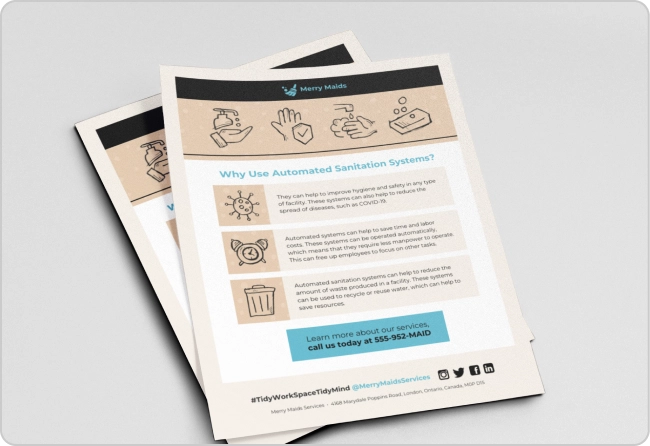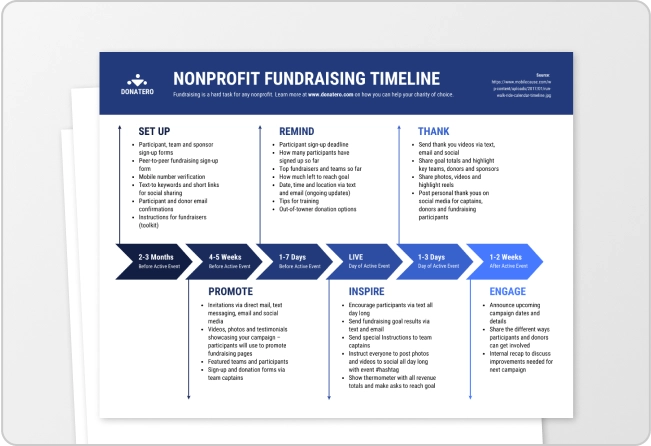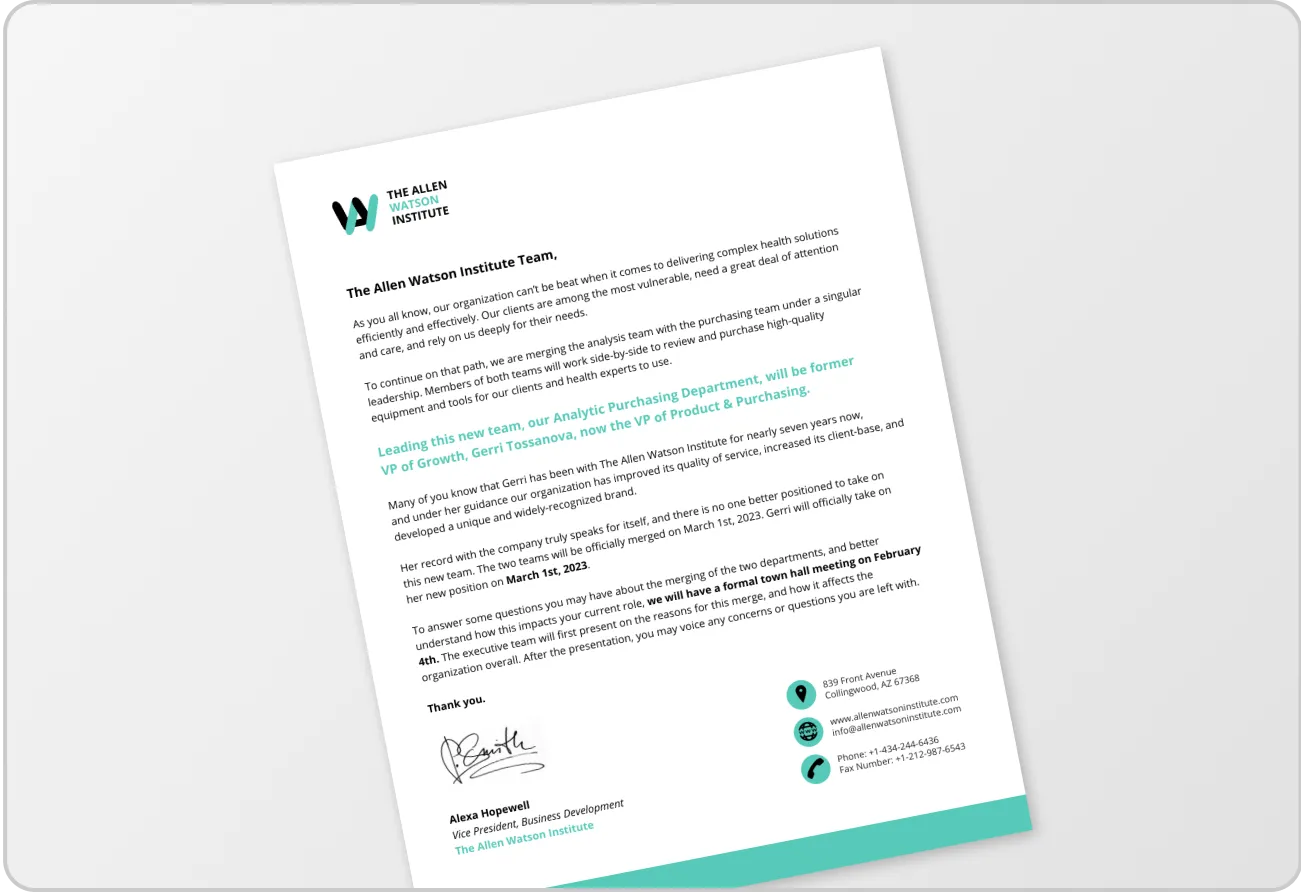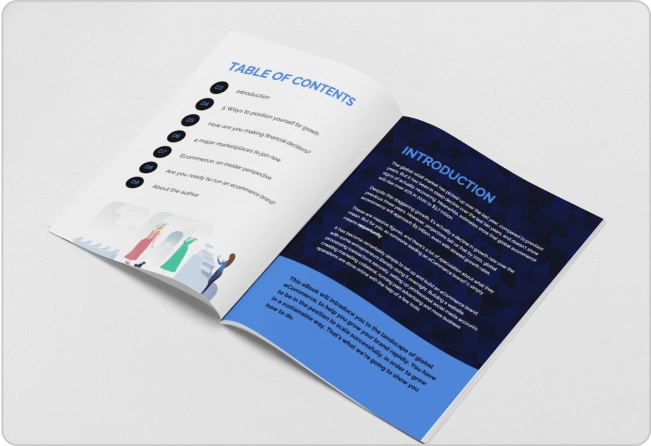
Your website is your best marketing tool. Even if you normally rely on customer referrals, a website with great visuals and valuable content can set you apart from your competitors and increase your revenue.
Plus, customer buying habits are quickly changing in the current business environment.
You need to know what your customers are searching for right now and how you can make sure these people find your website.
In this guide, I’ll teach you how to bring more people to your website. No marketing mumbo-jumbo, no expensive software, no confusing techniques.
Just simple strategies, free tools and clear examples you can use now to get a lot more visitors to your website and boost your bottom line.
Table of Contents:
- What is a marketing website?
- What is a website marketing strategy?
- What is the best online marketing strategy?
- How can I start marketing my website with no experience?
- Create content to bring in new customers
- Make amazing visuals for your website
- Get your site on Google’s first page
- Website marketing examples
1. What is website marketing?
Website marketing means promoting a business website in order to bring in more visitors. These visitors should be people who are likely to purchase the business’s services or products. More visitors means more opportunities to try to convince potential customers to buy.

Website marketing usually means getting on the first page of search results.
You can get on the first page of search results by:
- Putting great content on your website
- Using tips and tricks to get search engines like Google to find you better
- Social media posts
A marketing website often has the following:
- A sales page where visitors can book services and lists reviews, benefits and features
- And/or an online store
- A blog that builds authority and promotes your product
- A social media plugin that visitors can use to share your posts
- Links to your social media pages
- An about page that creates confidence in your company
- Supporting visuals that inspire emotions and show clearly what you offer
- Case studies
- Free downloads like an eBook or white paper in exchange for an email address
- Mobile optimization
For example, the sales page or landing page. Small businesses need them to “close the deal,” whether you’re selling software or other digital products, a service, physical items or selling products online.
A landing page should be focused on features, testimonials, money-back guarantees and other selling points, like in this simple landing page example:
2. What is a website marketing strategy?
A website marketing strategy is a plan to reach a goal based on what your website is already doing well, and what it’s lacking.
For example, let’s say the visitors who do visit your site usually book a free consultation. But, you don’t have that many visitors to begin with.
So, your website marketing strategy needs to be focused on getting more people to your site in the first place.
A website marketing strategy can include:
- Optimizing your website for search engines so more people find you
- Publishing blog posts
- Running a contest or giveaway
- Promoting your website on social media and/or in your email newsletter
- Offer downloadable educational resources like white papers, eBooks, ultimate guides etc.
- Offer downloadable sales resources like brochures or posters
- Offer a webinar or sales demo (live or recorded)
- Offer information about services you offer in blog posts or articles
- Advertise on social media platforms (Instagram or Facebook ads etc.), including retargeting people who already visited your site. These Instagram marketing tips will help you get started.
For example, this eBook template can be customized to discuss a solution to a common problem your customers have. Make a landing page using a program like Instapage to collect email addresses before people are able to download the eBook.
This problem your eBook tackles could be anything from “how to get your first 10,000 Instagram followers” to “how school districts can adapt to remote learning during the pandemic.”
You can also use bold graphics to quickly explain key selling points and repurpose the content to promote your ebook on social media platforms. That way, you’ll be able to get more people coming to your website.
For example, this simple mind map template can easily be edited to explain the benefits of your business. You can add to your sales page, downloadable one-pager, webinar and more.
Create a formal content marketing plan for your website marketing strategy. This is great if you need to present it as part of your business plan to potential investors. Or you want to share it with business partners and/or employees.
3. What are the best online marketing strategies?
The best online marketing strategy is content marketing, which means creating and sharing online content such as blog posts, videos, and infographics like this one:
Content marketing is the best online marketing strategy because it is a timeless tactic (not a trend) that both introduces possible new customers to your service or product and establishes you as an innovative thinker in your field.
Innovative thinkers often have their content shared online, meaning your company gets more potential exposure to new customers.
For example, you can customize this list infographic to deliver tips based on your expertise and place it on your blog or Pinterest. Or ask other related sites to post it.
The most effective online marketing strategy is creating content that addresses the specific needs of your potential customers. You can provide personalized information to your audience with a quiz maker in the form of interactive content that encourages interaction. Adopting a website personalization strategy is important if you want to maximize your conversions.
This strategy goes beyond just getting people to your website, but making sure they actually engage with your business via valuable, highly relevant content.
In sum, valuable content should:
- Speak to your audience’s main problem
- Show how your product or service can solve this problem
Further Reading:
- Our post on growth strategies digs into other ways to grow your business.
- Learn how to conquer social media with our social media plans
4. How can I start marketing my website with no experience?
The key to website marketing is useful content that potential customers will want to read and share.
You also need a plan to reach people beyond your existing audience.
That means no emailing your newsletter subscribers again and again, no relentless posting on your social media accounts.
So, you need to know what content to create and how to get it in front of more people. Which is why you need a website marketing strategy.
How to build a website marketing strategy:
- Figure out who your buyers are
- Look at what’s working on your website, and what isn’t
- Choose goals and what tools you’ll need to reach them
- Plan the campaigns you need to meet your goals
Here’s an example: a tree removal company based in Ontario, Canada.

Pretty slick website. I’m wondering if they’re getting as much traffic (visitors) to their website, as they’d like. It looks like their blog hasn’t been updated since 2018.
Writing new blog posts based on what their customers are searching for on Google would help bring in new potential customers.
The next section shows you how you do just that.
5. Create a website content strategy
To create content your customers actually want, you need a website content strategy. You should:
- Research what words your customers use when they’re Googling for solutions
- Make sure your website pops up in Google when they do so
To do this, you need to know first who you want to sell to and what their problem is–and how that relates to your business.
Let’s start with a checklist that summarizes what we’re going to cover. You can also edit this content marketing checklist and put in your own priorities:
Who is your audience?
First, let’s do the groundwork for your website content strategy. You need to find what sort of people you actually want to bring to your site. Because you don’t want all your hard work poured into bringing in people who won’t buy what you’re offering!
You can use this simple user persona template to help inspire your research:
Let’s explore some simple research options.
Check who’s already visiting your website
Website data tools will help you track who’s already visiting your website, giving you an idea of who your customers are.
Google Analytics gives you a lot of data but it can be a pain to learn if you’re new to website marketing.However, if you’re using Salesforce, Google Analytics integration with Salesforce can provide a more seamless experience by connecting your website data directly with your CRM.
W3Counter is a great, free alternative that lets you see:
- Where your visitors are located
- How they find your website
- What content on your website they visit the most
For example, in the audience report you can find where your site visitors are coming from (even what states or cities) and what language they speak primarily.

If you’d like a more advanced, but still user-friendly website data tool these 25 Google Analytics alternatives are a good place to start.
Snoop online forums and groups
Spend time in the groups and forums your customers frequent. Listen in on their conversations to understand their problems. Write down any issues you see over and over, as well as any words or phrases you see repeated.
Here are some places to start:
- Facebook groups
- LinkedIn groups
- Quora
- Angie’s List
- Google Business reviews
- Amazon reviews
For example, let’s go back to my favorite tree removal company example. Angie’s List is a site that lists home-based services like landscaping and roofing.
You can search by zip code and check out reviews of your competitors:

Here are some key phrases and points you could use from the above results in your website marketing:
- “A quote was provided the same day I called” >> form for same-day quote on your website, with link on homepage. Promote in social media, newsletter, ads.
- “Haul away the debris for extra payment” >> add as a feature on your “about us” page
- “Stump grinding” >> same as above
- “Neat” “left the yard all clean” >> add reviews like this to your website
- “Price was very fair” >> add “fair prices” to your social media ads
Ask your customers yourself
This is assuming you’ve already launched your business, though you can poll potential customers too.
Here are some options:
- Use your email list to send a survey. You can make one for free using SurveyMonkey or Google Forms. Or you can post the survey in one of the social media groups your customers frequent, but make sure you check the group rules first and clear it with the moderator.
- Ask past customers for a 15-30 minute phone call. You may have to compensate them for their time–a gift card should work. You can also approach your friends and connections on social media, or ask them to connect you to mutual friends who might be a better fit.
- Add a pop-up poll to your website. Here’s a simple question: “what were you looking for here that you didn’t find?” We use Hotjar Polls on this site and it’s given us some valuable insights on what our blog posts and other pages are missing. The basic plan is free so there’s no reason not to give it a try.
If you’d like to dive deeper into who your customers are so you can make better informed decisions about how to market your product, then creating user personas is a good idea.
User personas are representations of your customers. They include information like:
- Goals
- Pain points (problems)
- Behavior
- Demographics
If you want to get really in-depth, this template should help inspire you to dig into who your ideal customer is:
Essential Reading: our guide to user personas with tips, examples and templates.
What content would your audience be interested in
Now you have an idea of who you’re writing for and what they want. Now it’s time to make or update content these people want.
Here are the types of content you can make:
- Blog posts
- Landing (sales) pages
- Social media posts
- Infographics
- Charts or graphs
- White papers
- eBooks
- Case studies
- Webinars
Don’t have a lot of content yet to choose from? Just starting out? Click here to skip ahead.
Find your top-performing content
Creating content can take a while to research, write, edit, publish and promote.
So, if you have existing content that’s already getting lots of site visitors, you can just spin it into a different format.
Or, you can use that top-performing content might inspire you to write related blog posts etc.
Task: Look through your blog posts from the past year and find the content that your audience loves.
How do you do this? You’ll need to peek under the hood of your website using a tool like W3Counter or Google Analytics, as I mentioned above.
You can see what pages are visited most often and what keywords people use on Google most frequently to find your site. This is perfect to figure out what pages you should update or topics you should write more of.
Here’s an example on W3Counter:

“Landing pages” are where your site visitors initially “land” most frequently. “Keywords” are the words people use on Google or other search engines to find your website.
Task: Take a peek at your most popular social media posts.
How do you do this? You can scroll though your feed and see which ones got the most likes, shares and comments.
Or use a tool like BuzzSumo. Enter your domain in their Content Research tool and see what posts got the most engagement (likes etc.) on all your social media accounts.
Their “Most Shared” report tells you what content reached the most people on Facebook, LinkedIn, Twitter and Pinterest. This will help you decide what to post about on social media and other platforms, like your blog.

I entered my domain and filtered by “past year” and “English.” And voila – here’s my most engaging content by social media channel!
Check what your competitors are doing
This is a great strategy for new business owners who don’t have much (or any) content to look at. But, anyone doing website marketing will benefit from it.
Make a list of your top three competitors. Check out their blogs and social media channels. Write down what they post about most frequently.
What can you add to the conversation or how can you improve it? This is where your unique expertise comes in. Many blog posts are also dry and boring. I’ll include tips for adding amazing visuals below to make your posts stand out from the pack.
It’s okay to write about the same topics your competitors do–just don’t copy their work, obviously, and add your own unique perspective.
Essential Reading: our guide to competitor analysis reports will help you do a formal review of your competitors.
Research what your customers are searching for
Ideally you have an idea from your surveys, online research, calls etc. However, you can also make an educated guess about what your customers search for online.
Let’s say you run a local baby and kids store in Toronto. Clothes, toys, that sort of thing.
Open your browser (I like Chrome) and enter words related to your business. As you type you’ll see other options pop up in the drop down menu–these are related search terms people are searching for. Gold!
I started with the location (Toronto), then entered “baby” and lo and behold:

Now you can start planning your social media posts, digital newsletters, blog posts etc. around popular topics like baby gift baskets and baby clothes.
Or simply put in what your business is about. Lawn care? Type it in. Lawn care services is an option, so type “services” and you’ll see even more specific options:

Some ideas from this:
- Create a page on your site called “Lawn Care Services List” and list out all your services
- Write a blog post titled “How much should lawn care services cost?”
I’m going to give you some options for how to search. The “keyword” is a word directly related to your business.
- Keyword only ex: Lawn care
- Location + keyword ex: Houston plumber
- New + keyword ex: New pet food
- Keyword + delivery ex: Book delivery
- Keyword + tips ex: Lawn care tips
There are some great free tools you can use to dig deeper into what your potential customers are searching for:
- Answer the Public: Put in a keyword like “house painting” and get topics like “is house painting tax deductible” and “what makes a good house painter.”
- Keywords Everywhere: This Chrome extension works within Google. It shows related keywords like “house painting colors” and “house painting ideas.” You’ll need to upgrade to see how many people (on average) search for these terms per month.
Finding trending keywords
During this pandemic, consumer behavior has changed a lot. Search trends are changing on a dime.
In this case, Google Trends is your friend. It’s a free tool from Google that sees what search terms are more popular right now. You can filter the results by location and time frame, too.
I searched for “landscaping” in Arizona over the past 30 days:

Shrubs are a popular topic. So perhaps you could write a blog post about top shrubs fit for the Arizona climate. You can even see what regions in Arizona where landscaping is most popular!

6. Website graphics: create amazing visuals
Visuals such as infographics, screenshots, stock photos, videos, graphs and charts make the content on your website easier to read and digest. It’s an easy fix to improve your website design.
Need inspiration for what website graphics to use? Look at this post!
Infographics
Don’t underestimate the power of visual communication. Visuals such as infographics, data visualizations, videos and charts allow your customer to understand what you’re communicating faster. They also keep people on the page longer.
In fact, 40 percent of marketers agreed that infographics performed best out of all their content in 2019.
Infographics are particularly useful because you can use them in a variety of ways:
- At the top of your blog posts to summarize your post and make people want to share them.
- In social media, especially Pinterest where a longer graphic works better, and you can link back to your site.
- To pitch to other sites: guest posts and infographics.
- On your sales page to summarize your offerings.
- On your company’s About page to explain your company history or mission.
Here are some templates you can use as website graphics:
Company about page
Use these timeline infographics to show a visual history of your company.
Blog post infographic
Edit this template to summarize the main findings of your blog post.
Design Tip: click on any of the icons to open our in-editor library. Select a new option and the editor will automatically replace the old icon.
Social media infographic
Publish tips relating to your business on Pinterest, such as “plumbing tips for new homeowners.” Pinterest isn’t just a social media platform. It’s a search engine and it can drive major traffic to your website.
Design Tip: Our post on the formula for the perfect Pinterest infographic will help you master this platform. You can also take this one hour free masterclass from Pinterest expert Jenna Kutcher.
Guest post infographic
Guest posting on sites your ideal customers visit is a great way to not only gain visibility for your company and get links back to your website.
Getting links from websites can also get you on the first page of Google’s search results.
Why is this? Here’s how the magic happens:
- Let’s say you run a dog walking company.
- You search on Google for “dog walking tips” since this is a topic you’re obviously an authority on.
- Puppy Leaks is the number one result. It’s obviously an authoritative website.
- You pitch and write a guest post for Puppy Leaks on another topic, maybe “how to walk a dog that pulls.” You include a link back to your website in the guest post.
- Google sees this and decides that if an authoritative site like Puppy Leaks is linking to your website, then your site is probably also authoritative!
- You might then see your website ranking higher in Google’s search results for keywords related to your business.
Make your guest post pitch more attractive by proposing to include a custom infographic they can include in the post and that summarizes your main points.
These templates make it easy to round up your key findings:
Design Tip: Our business plan lets you apply your company colors to any template with one click, by importing them from your website. The feature’s called My Brand Kit.
Sales page infographic
Use this flyer template to show what you business offers and add it to your sales page. Skip the coding and use ready-made website graphics that you can easily import as images.
Design Tip: You can easily change the stock image in this template. Just click on it, click “replace” and then browse our in-editor library of free business stock images. Make your selection and we’ll replace the image for you and automatically resize it.
Essential Reading: My post on how to create viral infographics that drive backlinks and press mentions.
Sales pages
Your sales page is a perfect opportunity to showcase what features or services you provide, include a demo video, list positive reviews etc. The whole point is to drive the visitor towards an action: signing up for a demo, a free consultation, a trial plan or simply to buy buy buy.
Here’s one template you can use to make a captivating sales page:
Design Tip: Click any of the photos to replace them–we have thousands of free, professional stock images to choose from in our in-editor library. Or you can upload your own photos. Add your brand colors, change the text, swap out the icons and more.
This simple sales website graphic can be added to an existing landing page:
Browse more sales page templates.
Case studies
Case studies are a great way to show potential customers how other customers use your product or service in order to meet their goals.
It’s worth your time to create a stunning case study that you can download from your website. This is one of our most popular case study templates:
Design Tip: Apply your brand colors to this template with one click using My Brand Kit (business plan required).
Browse our post on professional case study examples for more templates and advice.
Webinars
Webinars are a great tactic to reach new audiences. You can promote them via a banner on your website, social media ads or by asking other businesses to promote it via their newsletters (and you can do the same for them).
That said, webinars require a lot of prep work, which is why you should use a slide template to make your job easier. It’ll also help keep the attention of participants.
Edit this webinar template to make it about whatever topic you like:
Design Tip: If you don’t like the gradient color, our online editor will let you select other gradients. Or choose a solid color or a variety of background patterns.
Branding
Think branding is just a fancy exercise for big companies with money to throw around?
Think again. Studies show consistent branding online can increase revenue by 23 percent.
So, it’s worth your time to make sure your website, social media channels and anywhere else you are online have the same look and style.
Create your brand by picking out three styles:
You can click any of the above links to read our authoritative guides on the topics (with templates).
Short on time? In this video, we explain branding in three minutes:
Blog Headers
If you don’t have time to design an infographic for your blog post, just insert a header instead. This way, the header image may also appear in Google searches.
Here’s a simple blog header you can customize for any topic:
Design Tip: Change the background color with one click by clicking “Background” in the editor and choosing a color. Then click the text box to edit it and click the typewriter icon to choose another icon from our library, if you like.
You don’t need to be in the travel industry to use this blog banner. Swap out the photo and text to fit your topic. It’s a simple way to add graphics to your website without too much work.
Design Tip: Click the photo in the template and then “replace” and upload your own photo or choose a photo from our free stock photo library.
7. Website SEO marketing: optimize your website so you appear on Google’s first page
The next step is to optimize your website for search, something called search engine optimization (SEO) or website SEO marketing.
You now have a list of keywords your customers search for most frequently. Some of these keywords you may already rank for. And some you won’t. You can’t find out unless you Google these keywords yourself.
Make sure you use Incognito mode in Google so your personal search history doesn’t influence the options!
I personally use Ahrefs’ Site Explorer Tool to check my rankings. It’s a bit more advanced but it’ll save you from scrolling through endless Google search results. It’s not cheap, but you can get a seven day trial for $7 and do all of your research at once.
Divide the keywords into two lists:
- Keywords you already rank for and need to optimize for
- Keywords you don’t rank for you need to write new content for
I’ll tackle each task separately.
Ranking higher for existing keywords
Let’s take Toronto Dog Walking, a company I have no affiliation with and have never tried.
I looked at their homepage in Ahrefs and they rank for some great keywords like “dog walker toronto.”

But, if there’s other keywords they don’t rank for like “dog walker north york” and “dog walkers near me.”
I used Keywords Everywhere (a free browser plug in) to find these other keywords:

They’ll probably want to add these words to the copy on their homepage so they start ranking for them.
Here are some easy wins to add keywords in a way Google will recognize:
- Use the keyword in the title and meta description.
- This is the title and description you see on Google. Yoast is a WordPress plugin that helps you do this. Or Google “tools to change meta description + your website host”
- SERP Simulator will help you don’t make your title and meta so long they get cut off.
- Two or more headings on the page should have the keyword
- The page’s URL should have the main keyword you want to rank for, if possible.
- For example, the target keyword for this post is “website marketing” and the URL is: venngage.one/blog/website-marketing
- Obviously this is not possible for your primary domain!
- Include links to well-known industry or news sites in your content (blog posts are best for this).
- Include links to other pages on your website. It’ll help the page rank.
- Make sure your image alt text and descriptions contain the target keyword. Yoast has a good guide if this sounds like Greek to you.
- Don’t create multiple pages covering the same topics and with the same keywords. You’ll split your traffic in half and pull both pages down in Google.
Seems like a lot of work? This easy checklist should help. You can customize it too, to add your own notes and priorities:
Design Tip: Click and drag to select multiple text boxes to change or delete them. Then click “Settings” in the top right of the editor to resize the page, if you want.
Getting links to your website
Pages with the number one spot on Google search results get five to 14.5% more links from new websites each month, says a recent Ahrefs study.
So, if you want to get more people to your website, you need more links to your website.
You can ask for links to your:
- Homepage
Sales page - Blog post
When a site that’s well-known in your niche or directly relates to your business’s niche links to your site, Google considers your content to be valuable and will likely bump your site higher up in the search results.
The more relevant links you get, the higher your site should rank–as long as you’ve made valuable content that has all the right keywords.
Here’s how you can get more links to your website:
- Collaborate with free guest posting sites that target a similar audience and write about your area of expertise.
- For example, my audience is small to medium businesses in the USA. I wrote a guest post for DIY Marketers about search engine optimization for small businesses and linked to our homepage on the words “infographic maker” because this is a Google search term we compete on. And yes, we are the #1 result for this term!
- Create infographics and pitch them to websites that cover your niche. This is a great strategy to get links to your sales page, which can be harder to get.
- Partner with influencers in your niche and have them insert a link to your content in their blog content. You can get a free trial for Mention to find these influencers more easily.
- Make sure you’re listed in business directories like Business.com and Google Places for Business.
- Discover brand mentions by Googling your brand name. If the site mentions your company but doesn’t actually link to your site don’t be shy! Click that “contact” button on their site and ask them for a link.
8. Website marketing examples
Building trust or “social proof”
Jobber’s blog post about the 10 best examples of arborist websites tackles a very specific problem: how professional arborists can show potential customers that they are trustworthy.
This means they need a website that showcases customers reviews and testimonials, their business accreditations, insurance etc.

Jobber’s post includes a handy checklist unique to arborists plus real examples of arborist websites that work, with screenshots:

Content that adds value
Melinda Emerson is a Philadelphia-based entrepreneur and author who runs a marketing consulting firm. She’s a go-to for small business advice and has been featured on MSNBC, the Wall Street Journal, Fox News, Fortune and more.
This is her advice on the best website marketing strategy:
The best way to market a website is with good quality content that is published on a consistent basis.
And the proof is in Melinda’s site: succeedasyourownboss.com. When you enter her site, a pop up appears with an offer that’s very useful to her audience: an eBook for small business owners on how to weather a recession:

Once you click the download button, you’re directed to a landing page that tells you that your PDF will arrive by email. It also suggests blog posts to read, helping your new visitor become even more invested in your site.

Why This Works: A direct sales pitch is a bit much for a new visitor to your website. Instead, build loyalty with content that’s useful and interesting. Plus, a download allows you to collect an email address and follow up with a series of automated emails introducing herself, her company, her best tips … and her sales pitch.

Offer free advice to help with a problem
Terri Levine is the founder of Heart-repreneur and a business and executive coaching expert who has coached over 6,000 clients over 25 years. This is her advice on website marketing:
Today there is so much noise when trying to establish your business presence and engage prospective customers. While having a website is essential, blogging is a no-cost way to drive traffic to your site and generate high-quality leads. Blogging IS marketing for your website.
When you enter Terri’s homepage, you immediately see a big, friendly picture of Terri and a call to action that promises to deliver new leads for your service business.

Click through and you’ll get a landing page offering a free training that comes with glowing recommendations and media mentions.

Why This Works: The training addresses how you can drive massive growth with an online business during a recession–something her audience of small business owners are likely struggling with big time.
Content that meets a need
Here’s an example from Red Stag Fulfillment, a US-based company that warehouses, picks, packs and ships online orders for online retailers. These retailers work across state lines and once the pandemic hit, they needed to know what states defined what businesses as essential.
So Red Stag created an interactive map that pulled all this data together in an interactive format. The data pulled from a spreadsheet that was continually updated with new details.

You can do the same thing with this template to show data by state in the US:
Design Tip: Click the map and a spreadsheet opens. Enter your data or import an Excel spreadsheet. The states will be colored according to the results. Or check out our map templates for more states and countries.
Be Mindful of Data Privacy Compliance
When optimizing your website marketing, don’t forget to prioritize data privacy compliance.
Data privacy laws like the General Data Protection Regulation (GDPR) and the California Consumer Privacy Act (CCPA) apply to websites around the world and require you to give protected users a choice regarding how their personal information gets collected and used.
If you use third-party services like Google Adsense or Analytics, you’re collecting personal information from your website visitors.
Post a compliant privacy policy in the footer of your website, and make sure you’re using a banner to collect cookie consent preferences from your users.
Doing so helps you avoid fines, builds trust with your website visitors, and can even help improve your search result rankings.
Website marketing: the takeaway
Website marketing is ultimately about creating content that your customers need and then working to make sure as many potential customers hear about this content over time, consistently.
The strategies I’ve listed above won’t result in overnight success.
You need to put in the time to research your customers’ pain points and make content that addresses those issues in a way that’s in-depth, highly useful and unique–plus, that’s optimized for Google search.
But, if you do the background research and don’t just shoot in the dark, you’re sure to start attracting the right kind of customers to your website–and more of them.































































